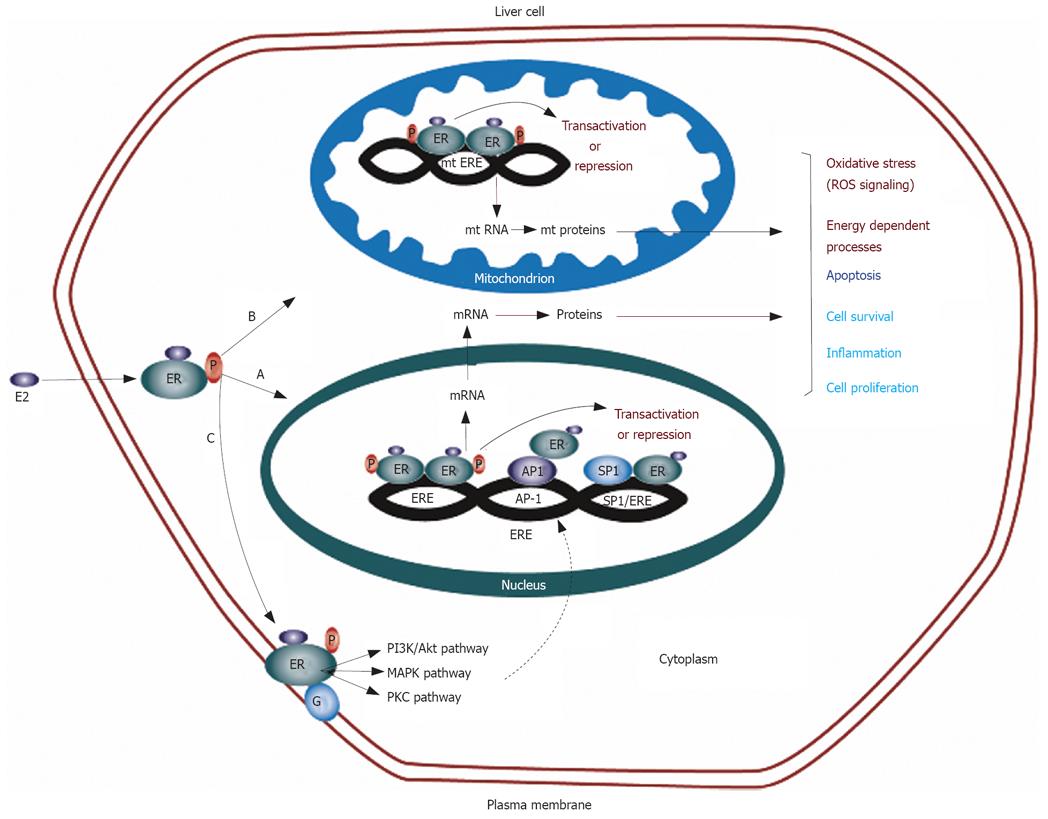Copyright
©2008 The WJG Press and Baishideng.
World J Gastroenterol. Oct 21, 2008; 14(39): 5945-5961
Published online Oct 21, 2008. doi: 10.3748/wjg.14.5945
Published online Oct 21, 2008. doi: 10.3748/wjg.14.5945
Figure 1 Genomic and non-genomic functions of estrogen mediated by estrogen receptors (ERs) localized in different sub-cellular organelles of a liver cell.
A: Genomic actions include translocation of ligand-activated ERs to the nuclei for regulating gene transcription. This transcriptional control is carried out by binding to DNA at a sequence containing either full estrogen response element (ERE) site or an ERE half site adjacent to the binding site for another transcription factor like Sp1. An additional mechanism involves gene regulation at alternate response element through protein-protein interactions with other transcription factors (AP-1, CREB, NF-κB); B: Activated ERs control mitochondrial gene transcription by binding to ERE like sequences (mt ERE) leading to modulation of mitochondrial functions including metabolism, oxidative stress and apoptosis; C: Membrane localized ERs are G-protein coupled receptors that activate various protein kinase pathways. These signal transduction cascades in turn regulate functions of many transcription factors resulting in modulation of expression of a number of genes involved in cell proliferation, survival, apoptosis and inflammation. Genomic and non-genomic actions of estrogen converge to exhibit a fine degree of control for the regulation of transcription by ERs in a liver cell. Modified from: Chen et al[110] 2005.
- Citation: Kalra M, Mayes J, Assefa S, Kaul AK, Kaul R. Role of sex steroid receptors in pathobiology of hepatocellular carcinoma. World J Gastroenterol 2008; 14(39): 5945-5961
- URL: https://www.wjgnet.com/1007-9327/full/v14/i39/5945.htm
- DOI: https://dx.doi.org/10.3748/wjg.14.5945









